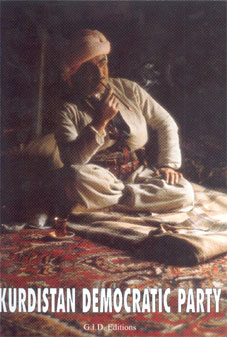Distantly related to the Cult of Angels, Yezidism is a specifically Kurdish religion.
Today all Yezidis are Kurds. There was a time when most Kurds were Yezidis.
But Yezidis are still considered the living memory and conscience of the Kurds.
Confronted with the ruleing policy of the Ottoman caliphate, the Yezidis were unfairly
denonced as Devil’s Worshipers, and fell victim to dreadful massacres over
hundreds of years.
Yezidism recently opened up its secrets to the outside
world. Its texts, rites and holy places became accessible. Still a mystery
surrounds this religion.
Yezidism was long incorrectly described as a
kind of Sufism. Yezidis holy men were recognized as Sufis. So were their
religious hierarchy, and their prayers. Their pilgrimage to Shaykh Adi's
shrine, (Shaykh Adi, 1073 -1162, preached Sufism) which takes place in the
second week of October every year, in Lâlesh (North Iraq), was compared
to the pilgrimage to Mecca.
But the Yezidi religion has little to do
with Islam. For the Yezidis, Xwedê (“The One who created Himself”),
the Universal Spirit, created the White Pearl, or the Original Cosmic Egg,
and placed it on the back of the bird named Anfar, whom He created as well.
But when Anfar took flight, the White Pearl fell off its back, and broke.
On Sunday, the first day of the Creation, Xwedê, in the First Epoch,
gave birth to the angel Azâzil, also called Malak Tâwus
(The Peacock Angel). Then Xwedê gave birth to another angel
every day for the following six days. These seven angels were
responsible for the material world, created from the remains of
the original pearl.
Yezidis venerate Fire, Sun, Earth, Water and Air.
They believe in symbiosis with nature. And they assign the greatest
importance to moral principles such as honesty, pacifism and tolerance
of other religions.
Contrary to ignorant legend, Yezidis do not
believe in the personification of Evil. Good and?Evil coexist under
God’s control. Man is solemnly responsible for his actions.?
God gave him the ability to think, then to decide.
The Yezidis
believe in reincarnation, through which they reach a new level.?But
because this, it is impossible to convert to Yezidism. You have to be born a
Yezidi. The Yezidis are divided in two different castes, the group of the lawmen “murid”,
and he group of the religious men, this one being subdivided into the
castes of the Sheikhs and the Pirs. The castes in the Yezidi religion
define mainly religious functions.?Contact between the castes being crucial
for the preservation of the religion.
Today there are between six
hundred thousand and one million Yezidis, mostly in Iraqi Kurdistan
(where their holy town of Lâlesh is situated), and in Western
Europe. Some other communities are located around Cizre and Mardin in
Turkey, Northeastern Syria, Georgia and in Armenia.







